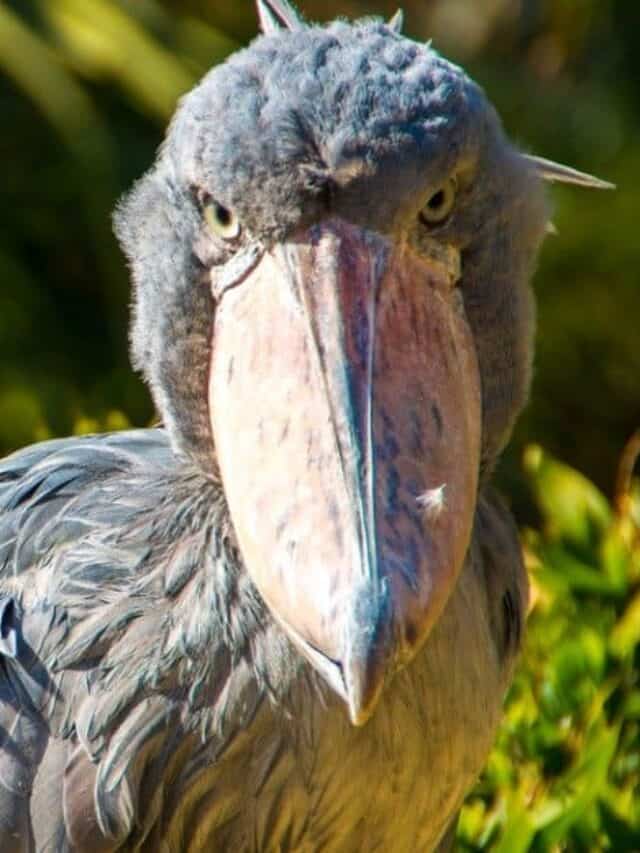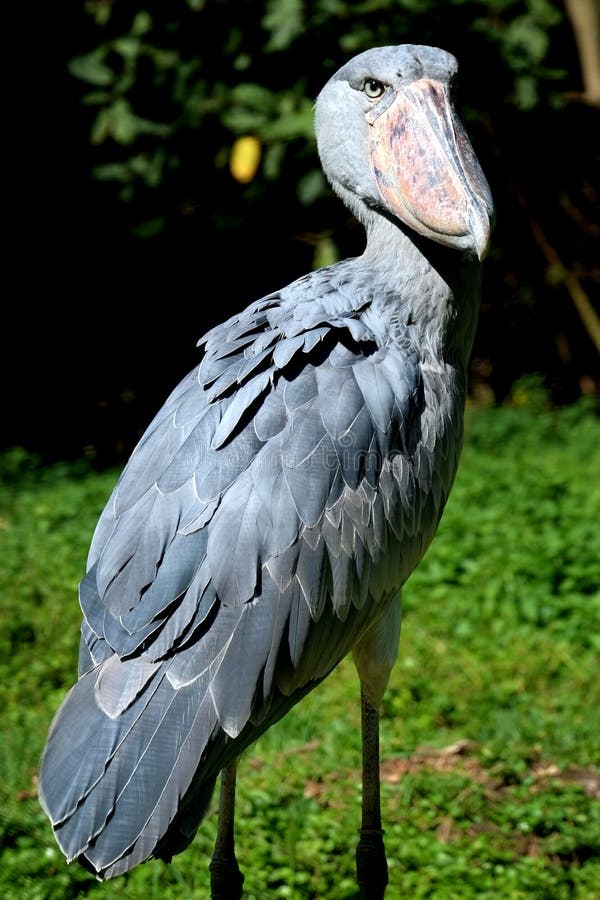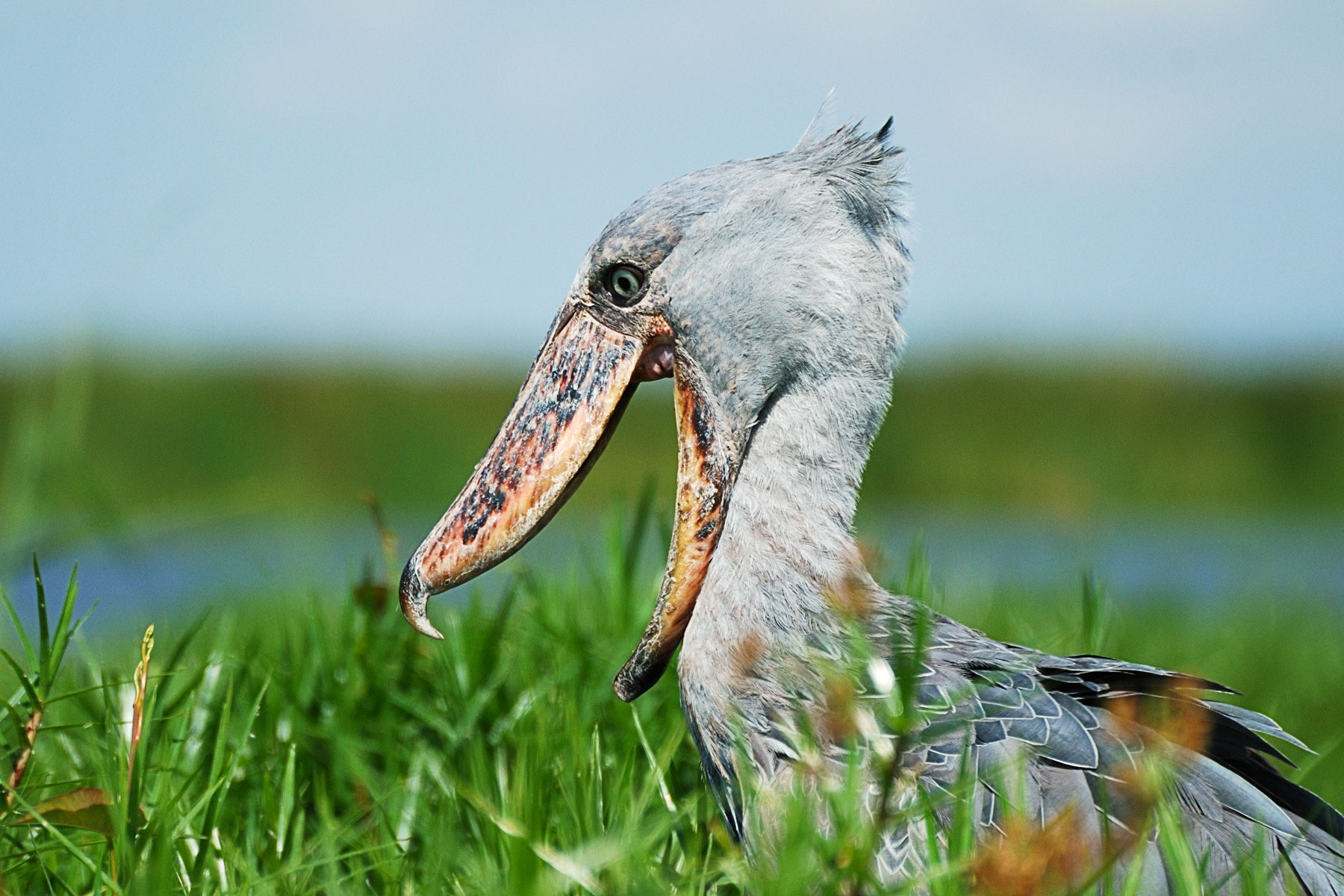
It also preys on aquatic animals such as amphibians, young crocodiles and watersnakes (Briggs 2007, Hancock et al. Diet When feeding, it shows a preference for lungfish Protopterus aethiopicus, but takes a variety of fish species including Senegal Bichir Polypterus senegalus, catfish Clarias spp. In South Sudan it has been known to forage on rice fields and other flooded plantations (Hancock et al. It is reported to prefer water that is poorly oxygenated, where fish are forced to surface to breathe, and are thus more easily caught (Guillet 1978), which is why it is thought not to frequent swamps that are characterised by papyrus alone (Guillet 1978). It tends to avoid areas where the vegetation is too dense to be penetrated easily, or is taller than the bird's back (Hancock et al. 1992) where it makes use of clear channels among the vegetation that have been created by the movements of large mammals (del Hoyo et al. Non-breeding It usually forages in shallow water (del Hoyo et al. It also uses permanent non-papyrus swamps in areas such as the Malagarasi (Tanzania) (Dinesen and Baker 2006) and Lake Victoria (Uganda) (L. It is often found in areas with abundant floating vegetation, often papyrus (Baker 1996). and grasses, particularly Miscanthidium spp.

The vegetation in these flooded marshes is dominated by a mixture of papyrus Cyperus papyrus, reeds e.g. Habitat Breeding It both breeds and forages in seasonally flooded marshes, but may utilise separate habitats for foraging and breeding (Renson 1998, Ngwenyama 2012). Eggs are laid at the end of the rains, as waters start to recede, and chicks fledge towards the end of the dry season (Hancock et al. It breeds solitarily, usually maintaining a density of fewer than three nests per square kilometre (Hancock et al. Loose aggregations may occasionally occur where receding water levels and large numbers of fish become concentrated in a small area (Hancock et al. Even within the pair, male and female will often feed at opposite ends of their territory (del Hoyo et al. In South Sudan there are regular seasonal movements between feeding and breeding zones (Guillet 1978). 2007).īehaviour This species is mostly sedentary, although it may make some movements in order to find optimal feeding habitat as water levels vary (del Hoyo et al. There is little doubt that the species is declining in Tanzania, Zambia and Rwanda, with possible declines in Uganda as well, and the species may be more threatened than available information suggests (L. Surveys in September-October 2005 support the suggestion that there are a few hundred individuals in the Malagarasi region of Tanzania (Briggs 2007). A total population of less than 10,000 individuals is supported by a literature review in which the extent of certain wetland habitats was found to have been significantly overestimated by previous studies. An estimate of 3,830 birds was given for the Sudd (including areas of Zeraf Reserve) by Fay et al. This figure may prove too low, depending on research into the South Sudan populations (T. In 1997, the population was estimated to be 12,000-15,000 individuals (Rose and Scott 1997), but a more recent review makes a conservative estimate of 5,000-8,000 individuals (T.


to Wetlands International (2002) are: c.5,000 in South Sudan (50-80% of the total population ), 100-150 in Uganda (but possibly over 200 ), 100-500 in western Tanzania (this figure also proposed by Dinesen and Baker ), <500 in Zambia (Roxburgh and Buchanan gave a later estimate of 1,760, with 1,296 in the Bangweulu Swamps alone, but this is possibly an over-estimate ), <1,000 in the Democratic Republic of Congo (DRC), irregular visitors in the Central African Republic, <50 in Rwanda and <50 in Ethiopia. Approximate national estimates proposed by T.

Balaeniceps rex is widely but very locally distributed in large swamps from South Sudan to Zambia.


 0 kommentar(er)
0 kommentar(er)
